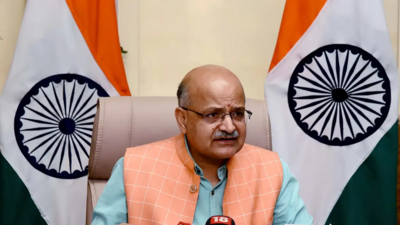Apple looks to manufacture more iPhones in India as Trump’s tariffs hit China harder: Report

Apple is considering India as a key location to expand its iPhone manufacturing operations amid Donald Trump’s new tariff policies, according to a The Wall Street Journal’s Tuesday report.
US President Donald Trump has implemented new “reciprocal tariffs” affecting more than 180 nations. India, which currently produces up to 15% of Apple’s iPhones, now faces a 26% US tariff. Whilst this is lower than China’s 54% (now 104%!) and Vietnam’s 46%, it presents immediate difficulties but could prove advantageous over time.
Apple is particularly vulnerable to these new tariffs. According to ET, the company anticipates exporting iPhones worth $8-9 billion to the US this fiscal year, following a period of duty-free imports.
To counter the tariff, Apple has developed a strategic response. The organisation intends to accelerate iPhone exports from India to the US to minimise the financial impact of increased tariffs on Chinese-made products.
Also Read | Explained: How unfair are Donald Trump’s tariffs, what is India’s relative advantage, and what should it do?
Apple transported five aircraft loads of iPhones and other devices from India to the US within three days. These shipments happened in the final week of March, prior to the implementation of a 10% base reciprocal tariff by the Trump administration on April 5.
This forms part of Apple’s comprehensive approach to manage immediate tariff expenses whilst pursuing tariff exemptions in the US.
The US continues to be a crucial market for Apple’s products, particularly iPhones. The company aims to maintain current consumer prices to protect sales volumes and profit margins.
India in the scheme of global manufacturing prospects
India’s potential as a manufacturing powerhouse is strengthening, particularly as tariffs on Chinese goods create opportunities for alternative production bases for international technology firms, including Apple.
Also Read | Donald Trump’s reciprocal tariffs send global shockwaves, but India may be among least vulnerable – explained in charts
Apple’s strategic initiative to relocate 25 percent of its iPhone manufacturing to India by 2025 corresponds with India’s aspirations to become a worldwide manufacturing centre. The Indian administration is actively pursuing a bilateral trade agreement (BTA) with the United States to enhance economic collaboration and obtain favourable trading conditions.
Nevertheless, the United States has instituted a universal 10 percent import tariff, alongside additional country-specific duties. India faces particularly severe consequences, with a 26 percent tariff on its US-bound exports, exceeding rates applied to other Asian nations such as Japan and South Korea.
According to Rosenblatt Securities analysts, the premium iPhone 16 Pro Max could reach approximately $2,300 if Apple transfers the increased costs to buyers. This translates to over Rs 1.9 lakh in Indian currency.
India has established itself as the organisation’s second most significant production location, presently handling 10-15% of worldwide iPhone assembly, with intentions to increase to 25% by 2025. However, current circumstances cast uncertainty over achieving this objective.
Also Read | Is the world staring at a recession? ‘There will be blood’, warn experts on Donald Trump’s reciprocal tariffs impact





